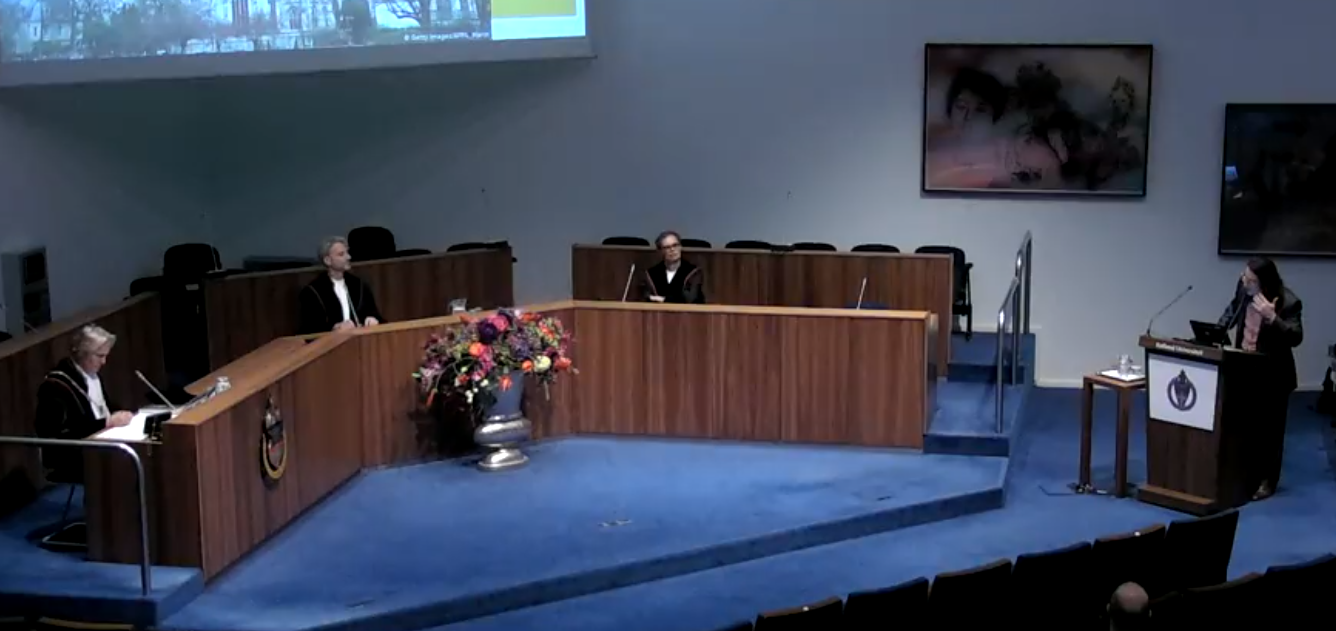 Friday, November 13, for many a curious date, one of our members of the Geography Group, Rodrigo Bueno Lacy, successfully defended his PhD Thesis entitled ‘In the image of Kronos – or how Europe is devouring itself. The iconological construction of EUropean identity, its geopolitical implications for the project of European integration and why it needs to be re-imagined ‘. Because of the Covid-19 pandemic, the opponents and audience needed to follow the defence at a distance via the live stream connection.
Friday, November 13, for many a curious date, one of our members of the Geography Group, Rodrigo Bueno Lacy, successfully defended his PhD Thesis entitled ‘In the image of Kronos – or how Europe is devouring itself. The iconological construction of EUropean identity, its geopolitical implications for the project of European integration and why it needs to be re-imagined ‘. Because of the Covid-19 pandemic, the opponents and audience needed to follow the defence at a distance via the live stream connection.
In his thesis he addresses how consciously or unconsciously the European identity and implicitly of course what is excluded from being ‘European’ is socially constructed also by means of cartographic images. The relation to the title of my personal website is obvious. This is a prominent form of Placemaking. Rodrigo strongly criticises how this European identity is superimposed and enforced upon others and how many are also excluded in this way. In his thesis, he develops a ‘critical cartography’. In this defence, he was generally praised for his emancipatory engagement. On the other hand, the opponents almost jointly addressed in how far the imagination of an evil top-down power superimposing a specific conceptualisation of a European identity, does justice to the diversity and layered identities of Europe. In the same way, one could ask who the ‘other’ in this case is? From this discussion, one might also wonder in how far this very engaged view, is maybe also contributing to, instead of emancipating from an ‘us’-‘them’ thinking, which he, in the first instance, intended to criticise. Reality in this sense might be much more complex and probably needs to be looked at much more from a relational perspective starting with a flat ontology. Nevertheless, addressing this issue in the way Rodrigo did, already contributes to a critical debate about how identity is not naturally given but continuously is part of identity politics and the politics of placemaking. This cannot be stressed too much.
It is again fascinating to see that the basic issues addressed and the theories mobilised in this analysis are very generally applicable in many different fields of Human Geography, Spatial Planning and Environmental Politics, irrespective if it is about borders, migration, integration, tourism, diversity, urban development, mobility, place experiences, economic relationships, armed conflicts or whatever. Especially in human geography, we tend to look for local contexts and the situational aspects of many phenomena and want to unveil the small stories of everyday life, but these more general aspects also show that there are also larger stories to be told. Looking into these general mechanisms of placemaking is also an essential aspect of doing fundamental research in academia. In that respect, Rodrigo’s contribution to the debate is a very valuable one.


